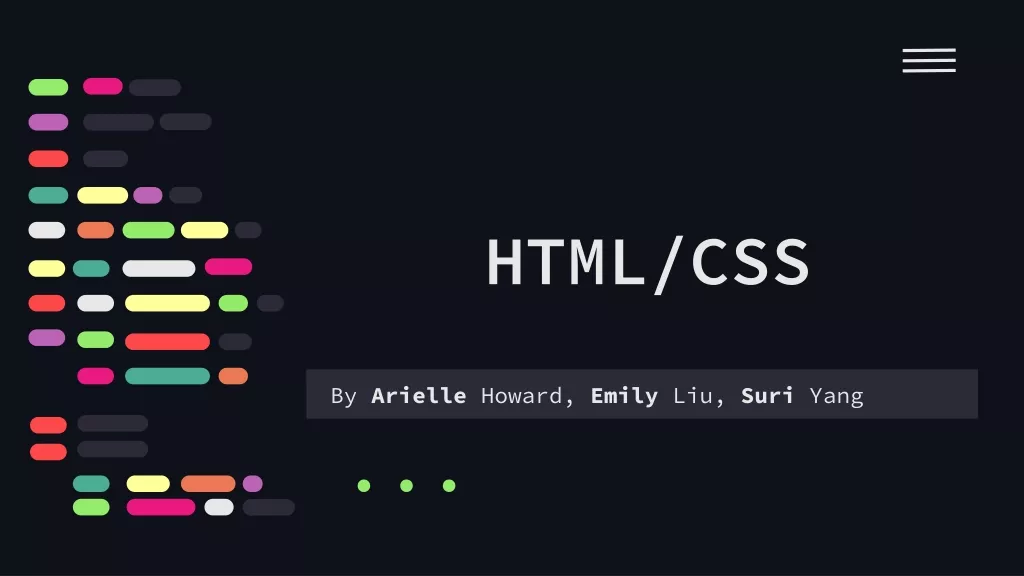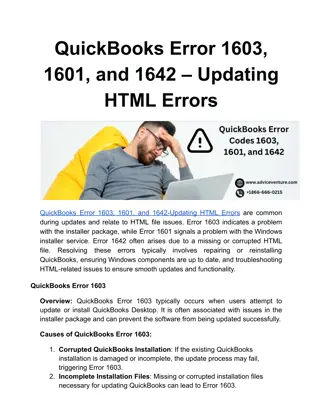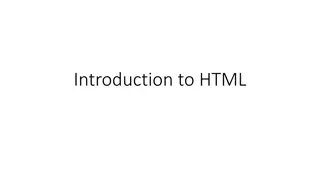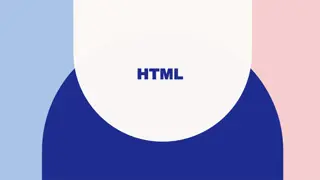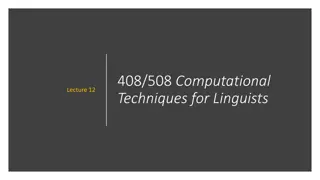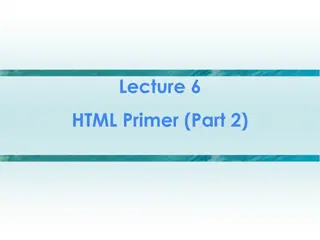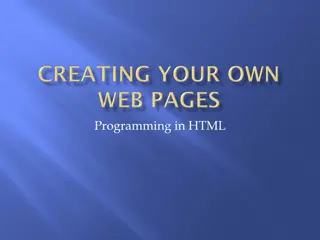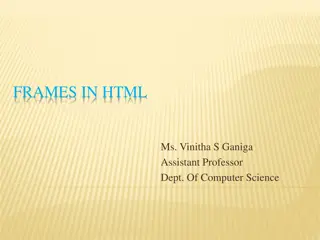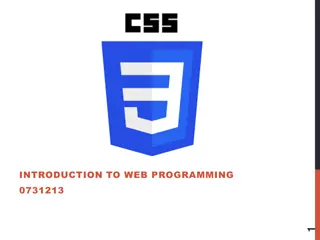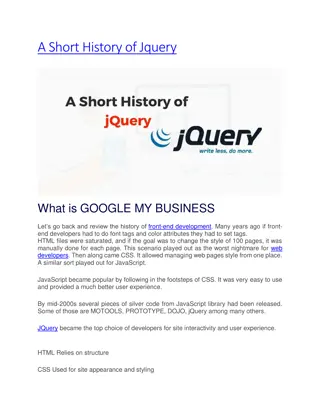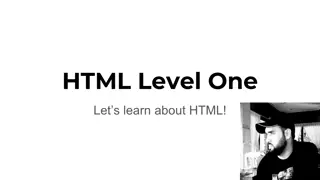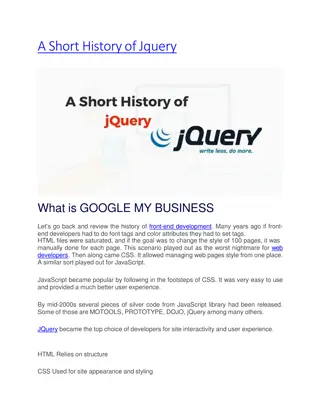
jQuery and HTML Methods for Reading and Writing Data
Explore the differences between val() and html() in jQuery, learn how to work with inner HTML and values of HTML tags, and grasp the concept of events like the click event in web development. Gain insights into selecting the appropriate method for reading and writing data on web pages efficiently.
Download Presentation

Please find below an Image/Link to download the presentation.
The content on the website is provided AS IS for your information and personal use only. It may not be sold, licensed, or shared on other websites without obtaining consent from the author. If you encounter any issues during the download, it is possible that the publisher has removed the file from their server.
You are allowed to download the files provided on this website for personal or commercial use, subject to the condition that they are used lawfully. All files are the property of their respective owners.
The content on the website is provided AS IS for your information and personal use only. It may not be sold, licensed, or shared on other websites without obtaining consent from the author.
E N D
Presentation Transcript
jQuery & HTML MIS 2402 Department of MIS Fox School of Business Temple University
Agenda Some things we ve seen before: The difference between val() and html() The click event Some thing we haven t Some jQuery methods: show() and hide() A few Bootstrap classes: Primary, Secondary, Info, Success, Warning, and Danger 2
The difference between val() and html() We have used these two jQuery methods repeatedly throughout the semester. We use these methods to read data from, and write data to, an HTML page. Like this: let x = $("#some_tag_id").val(); Or like this: $("#another_tag_id").html("Hello World"); Discuss: How do you know which method to use, and when? 3
Reading and Writing Inner HTML Some HTML tags have inner html. <p id="tag1">I am a paragraph</p> To read or write the text inside the tag, use the jQuery html() method. let x = $("#tag1").html(); //reading $("#tag1").html("hello world"); //writing 4
Reading and Writing Value Some HTML tags have value. <input id="tag2" type= "text" value="Old text"> To read or write the value of the tag, use the jQuery val() method. let x = $("#tag2").val(); // Reading $("#tag2").val("New text"); // Writing 5
Wild and crazy Some HTML tags have both inner html and value. <select id="tag3"> <option value="1">Yes</option> <option value="0">No</option> </select> 6
The click event Most of our examples and assignments this semester have used portions of code that look like this: $("#btn_1").click(function(){ //something happens here console.log("button click!"); }); This is an example of an event. An event is a condition that your code is waiting for. In the above sample, we are using the jQuery method click() to define what happens when the selected tag #btn_1 is clicked. 7
Some things to know about events There are many, many possible events that can be anticipated on a web page: button click, double-click, gaining focus, losing focus, key press, mouse over, mouse out, page load. And most HTML tags can be clicked! (Not just buttons!!) In this class, you only need to consider one kind of event: the click event. (Aren t you glad?) The syntax of the jQuery click method is this: $().click(); The function that will run when you click it The tag you might click on 8
Again Looking at this sample again: $("#btn_1").click(function(){ //something happens here console.log("button click!"); }); The red text is selecting a tag on the HTML page. The green text is the definition of the function that will execute when the click event takes place. FUN FACT: Unlike most of the functions you have written this semester, this function has no name. For that reason, it is called an anonymous function. Where else have you seen an anonymous function lately??? 9
Two new jQuery methods We can use jQuery methods hide() and show() to make HTML tags appear and disappear on the page. $("#some_tag").hide(); //make the tag //invisible $("#some_tag").show(); //make the tag //visible 10
Time for some work The learning doesn t stop here! In our assignment we will see these additional jQuery methods: addClass() removeClass() We will also see how to use bootstrap classes to indicate: Success, Danger, Warning, Information, Primary, Secondary 11

